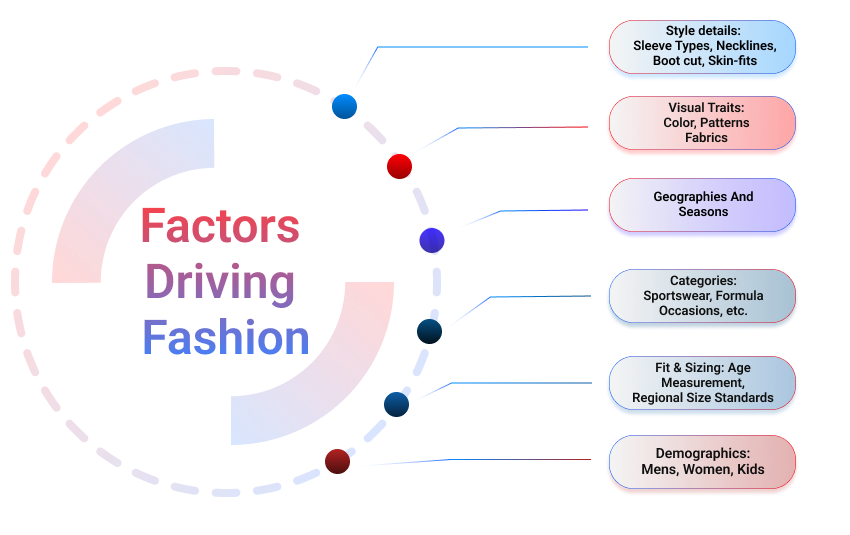The fashion industry is facing some unique challenges today. Amidst the overnight emergence and fading of styles and trends, building buyers’ trust, creating outstanding experiences, and disrupting the endless scroll of fashion aficionados has never been harder. Now more than ever, delivering a consistent, immersive experience across digital and physical channels—pre, during, and post-purchase—is critical.
That’s where Product Information Management (PIM) steps in. Done right, PIM doesn’t just drive repeat purchases—it cultivates trust. Here’s how fashion brands can win with it.
Tame Fashion’s Information Overload with Smart Automation
Short selling cycles and season-driven pivots create relentless demand for updated content. From changing collections to evolving marketing needs, managing vast volumes of product data becomes overwhelming without a system in place. PIM simplifies this by centralizing, automating, and updating product information.

- High product turnover: PIM handles frequent updates to descriptions, visuals, metadata, pricing, and availability.
- Multiple data sources: It consolidates inconsistent inputs from suppliers, designers, product owners, and marketers.
- Manual work: Reduces repetitive tasks and shortens time-to-launch with automation.
- Complex categorization: Organizes products with precise tagging across dozens of attributes like fit, season, and material.
Omnichannel Enablement for the Digital Fashion Era
Fashion buyers dictate how and where they shop—and brands must respond fast and flawlessly across platforms. PIM allows brands to meet omnichannel demands with speed and consistency.
- Multichannel publishing: Push content instantly to Amazon, Flipkart, Instagram, Pinterest, and more.
- Tailored experiences: Context-specific content for mobile, desktop, and tablets.
- Impulse-driven social sales: Present magnetic visuals and messaging to capture passive buyer intent.
- Data-driven targeting: Use behavioral data to personalize bundles and promotions.
- Enhanced discoverability: Smart tagging and keyword optimization refine search accuracy and relevance.
Drive Sales with AI-Powered Personalisation and Real-Time Insights
eCommerce enables deep customer insights—age, dwell time, basket contents, purchase behaviors. Combined with PIM, these insights allow hyper-personalized, data-informed experiences.
- AI analytics: Decode shopping behaviors and forecast demand trends.
- Hyper-personalisation: Customize visuals, recommendations, and language per buyer profile.
- Smart cross-sells: Auto-suggest bundles based on previous purchases.
- Improved UX: Size guides, search logic, and recommendations become smarter and faster.
- Visual matching: Automate image classification and enable color-based search filters.
Optimise Product Attribution to Boost Conversions
In fashion, it’s not about how many SKUs you have—it’s about how well they’re structured and tagged. A PIM-driven approach to product attribution ensures both logic and emotional triggers are captured.
- Smart classification: Build intuitive product hierarchies and avoid cluttered listings.
- Streamlined variations: Manage size, fit, and color variants without duplication.
- Cause-based tagging: Label products as sustainable, pre-loved, or ethically sourced.
- Higher AOV: Enable upsells and cross-sells like “complete the look” suggestions.
- SEO-optimized listings: Use trending attributes and keywords to capture search traffic.
Simplify Global Collaboration Across Dispersed Teams
If your designers are in Paris, suppliers in Vietnam, and marketers in New York, operational friction is inevitable—unless PIM becomes your single source of truth. From version control to approvals, a centralized system streamlines global coordination.
- Ensures every stakeholder accesses the same up-to-date data
- Tracks version history and workflow comments
- Prevents duplication with clear ownership and process
- Supports 24/7 progress despite time zones
Use Case: How Minds Task Technologies Helped Baggit Transform with Pimcore
Baggit, a leading Indian handbag brand since 1990, was struggling with disorganized digital assets, inconsistent metadata, and inefficient workflows. Minds Task implemented a Pimcore PIM and DAM solution to tackle these challenges.
- PIM became the centralized hub for all product content and attributes.
- DAM handled image automation—auto-resizing assets across channels.
- Dynamic PDFs, brand-specific asset tagging, and seamless updates streamlined workflows.
Results: 30% increase in conversions, 5,000 asset downloads, and an 85% boost in operational efficiency.
Final Thoughts
In a market where timing, trends, and trust dictate success, a robust PIM is more than a backend solution—it’s a strategic advantage. From automation and personalization to global collaboration and channel agility, PIM empowers fashion brands to stay relevant, responsive, and ready for what’s next.
Ready to Transform Your Product Data?
Minds Task Technologies brings deep Pimcore expertise to fashion and retail brands ready to scale their digital operations. Let’s discuss how our PIM solutions can bring clarity, efficiency, and growth to your business.

